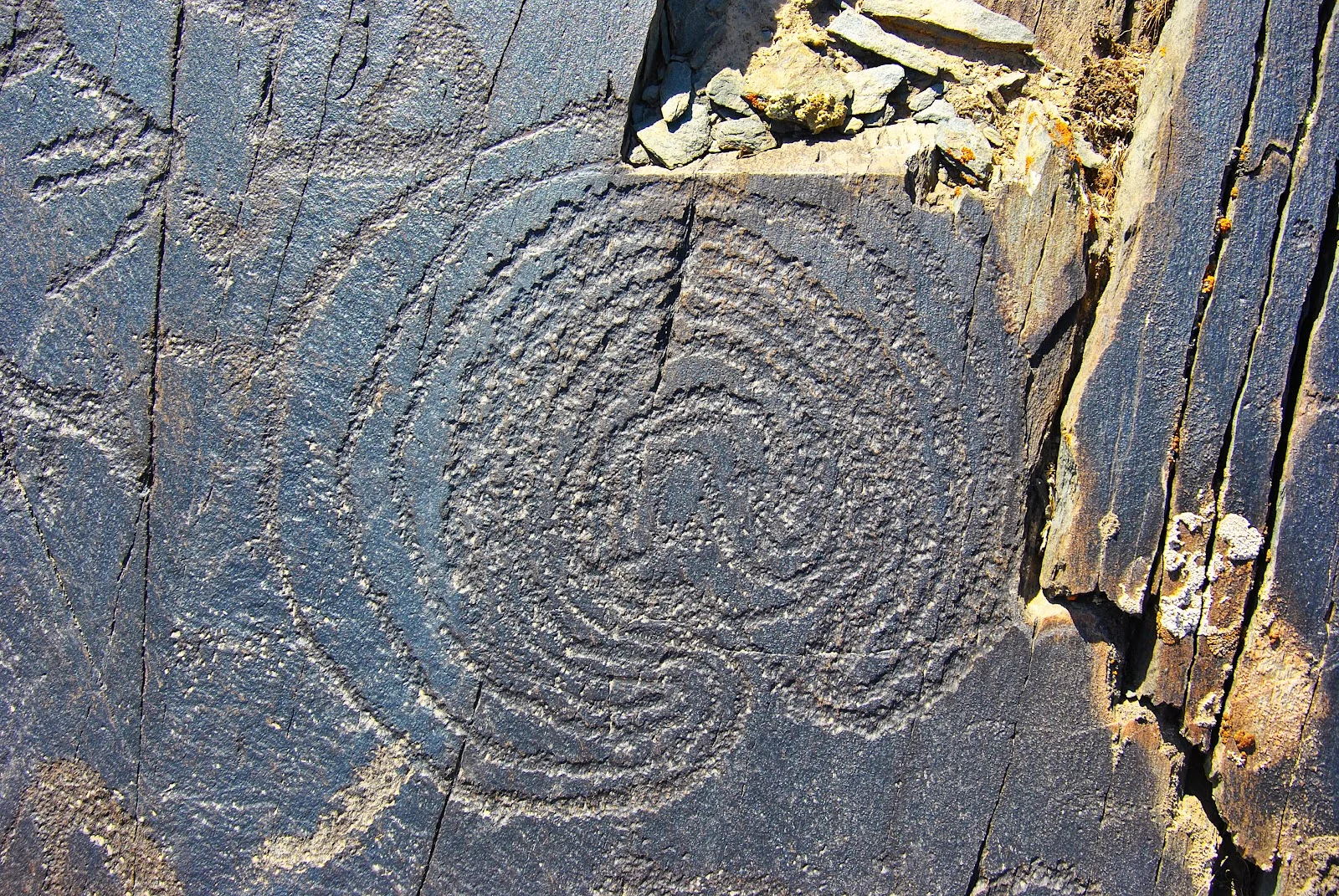Did the Minotaur make a friendly visit to the Chu-Ili Mountains? It is highly unlikely, as even the faintest traces of legends about this creature from the Minoan-Mycenaean world, infamous for devouring youths, have not been recorded in this region. However, a local labyrinth— or, more precisely, its representation— closely resembles the Cretan one.
The slab bearing the rare petroglyph is located in the Qoljabasy cluster (Chu-Ili Mountains, Jambyl Region). It is positioned far from the center of the sanctuary, almost as though deliberately hidden from prying eyes. Could it have contained secret information? Perhaps it was not intended for everyone but only for a select few who were specially initiated.
Labyrinth depictions undoubtedly held deep, sacred significance. However, the specific ideas and concepts ancient people associated with these drawings remain a topic of scholarly debate. Several theories exist, and we will mention just a few of them.
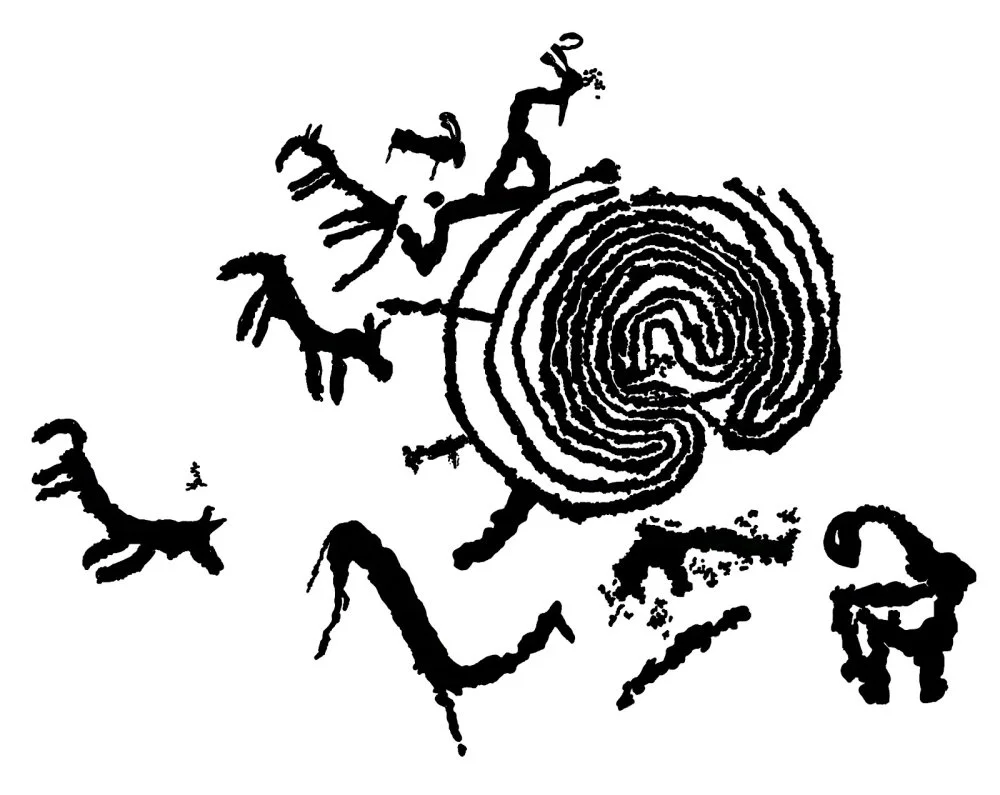
Labyrinth. Drawing. Kulzhabasy/Olga Gumirova
A Calendar
Some researchers believe that labyrinths, especially single-coil designs, functioned as unique calendars, where dots or notches represented lunar phases or the movement of the Sun.
A Blueprint of the Universe
Others suggest that ancient people used labyrinths to represent their understanding of the cosmos, including its interconnected layers. The maze from Qoljabasy dates back to 2000 BCE. Could people from such ancient times have contemplated such complex and abstract ideas? Certainly, in other ancient civilizations with written records, a significant portion of their texts is devoted to highly intricate cosmological theories.
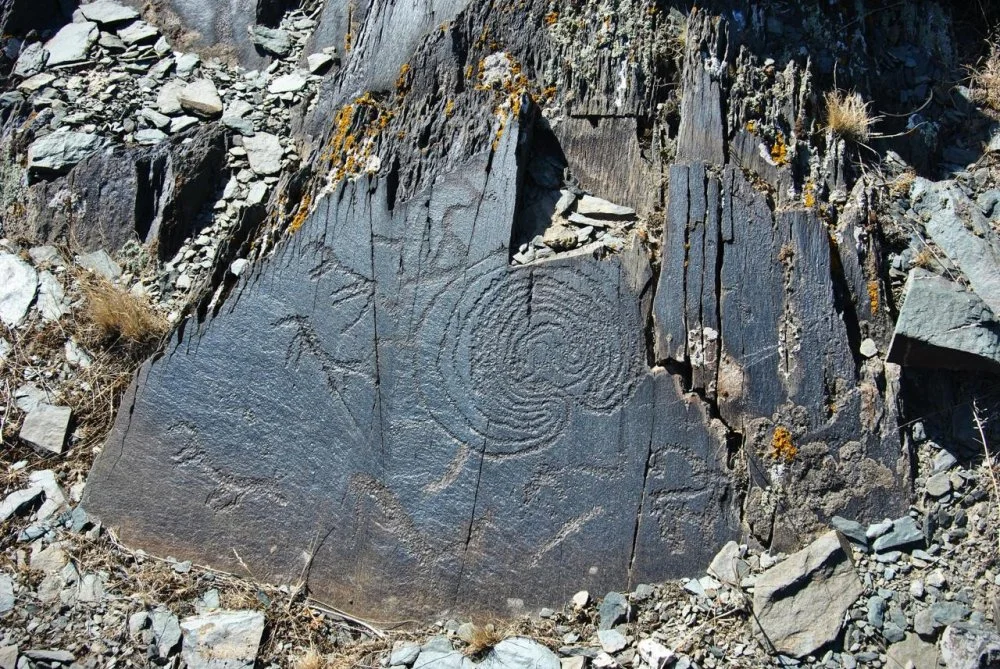
Labyrinth. Kulzhabasy. Chu-Ili Mountains/Olga Gumirova
The Journey of Life
The most widely accepted theory is that the labyrinth symbolically represents the process of birth and death, which is why such images are often linked to the cult of the Great Mother, a belief system that originated as early as the Paleolithic era.
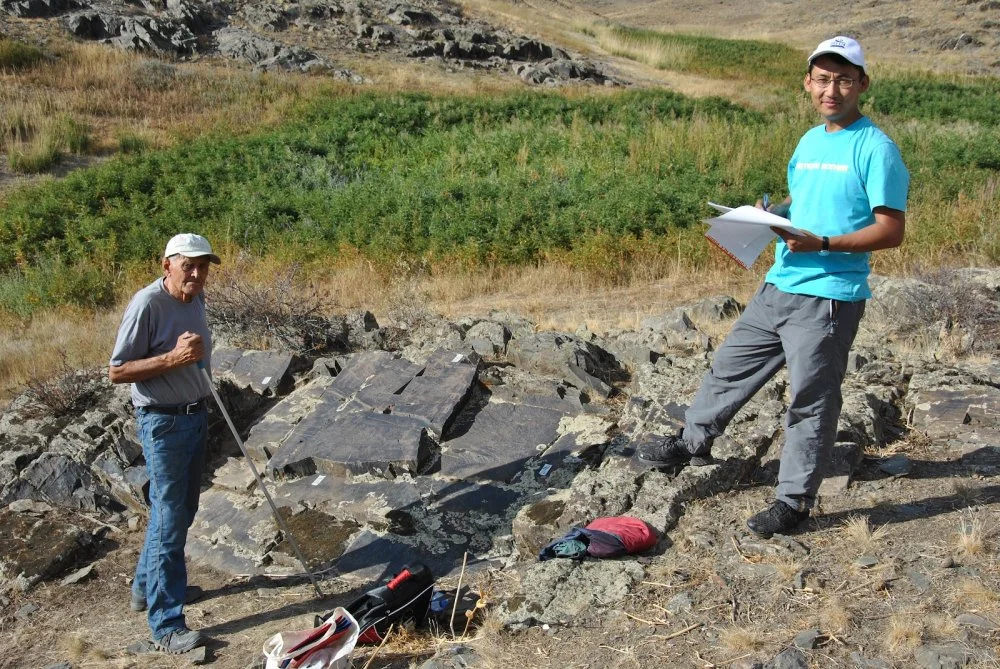
Research of Kolzhabasy petroglyphs. A.N. Maryashev with volunteer Sergazy Naryn/Olga Gumirova
Everywhere and Beyond
One notable detail about the Qoljabasy labyrinth is its classification as a seven-coil design. Such images feature seven concentric lines tightly coiled around a central point. There is only one entrance, and the only way to exit the labyrinth is to retrace the path in reverse. Similar petroglyphs, with near-identical patterns, have been documented across Eurasia—from Ireland to Karelia, Mongolia, and India. Of course, they are also found on Crete, the home of the legendary Minotaur.
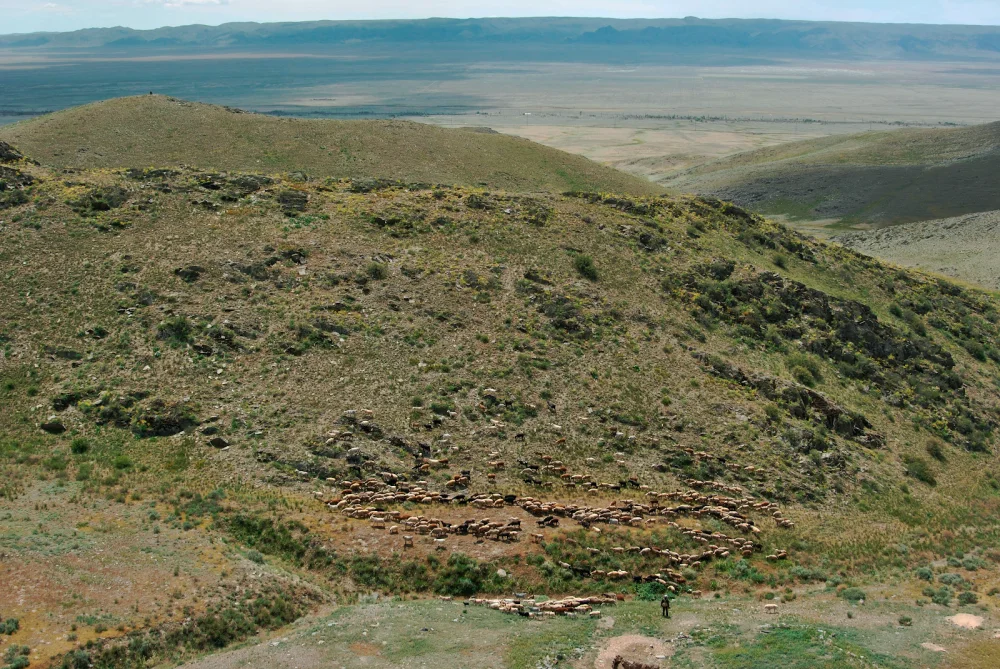
Views of Kolzhabasy. Now, as a thousand years ago, a shepherd herds a flock/Olga Gumirova
Why did people, separated by thousands of years and vast distances—by language, faith, culture, and way of life—continue to create the same design? What made it so important?
Though we cannot answer this question with certainty, one thing is clear: our ancestors' perceptions of the world were much more intricate and profound than we often realize today.
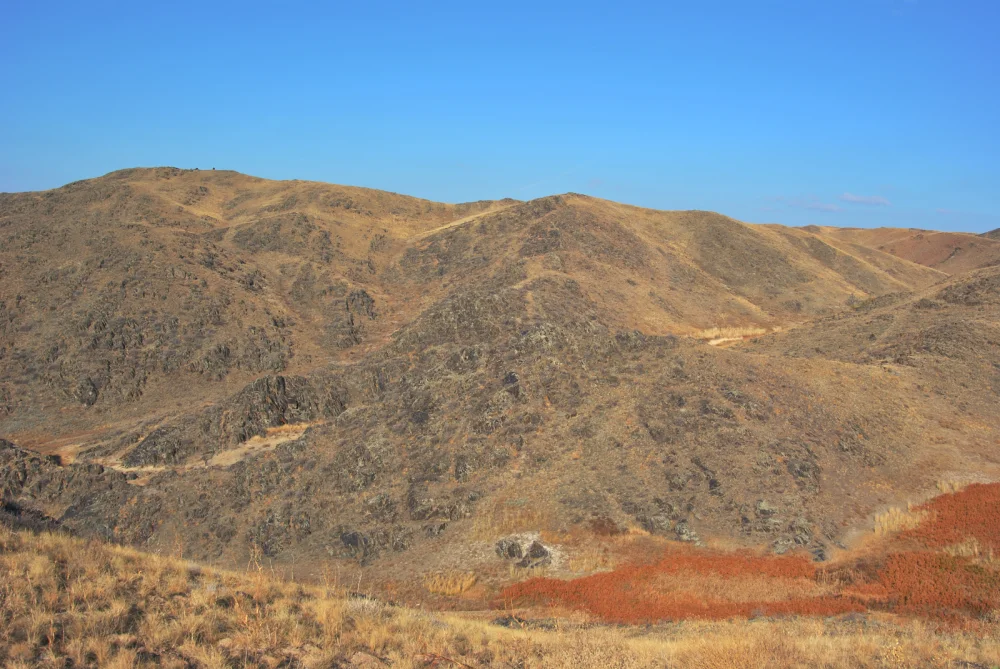
Views of Kolzhabasy. These mountains were once densely populated place/Olga Gumirova

